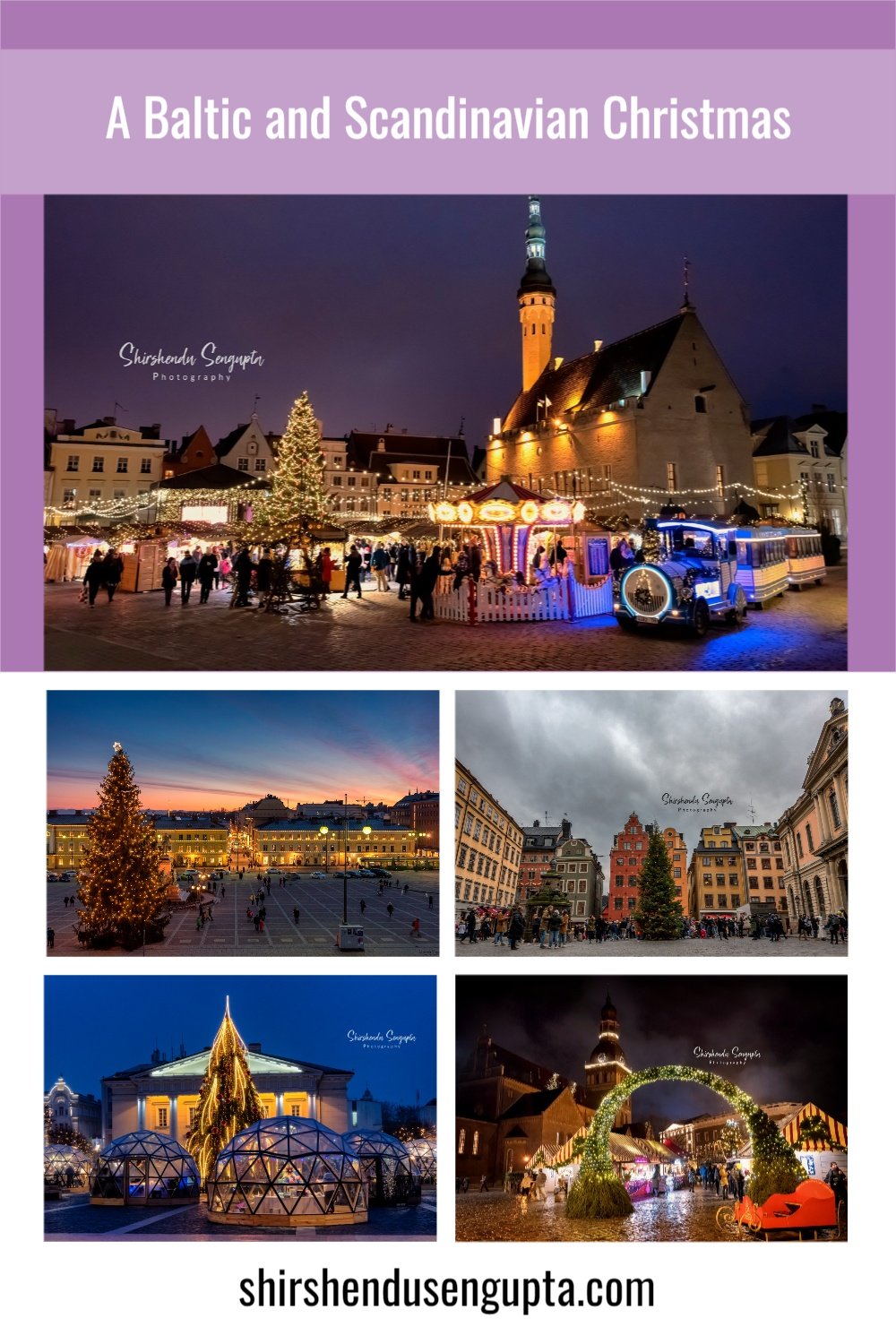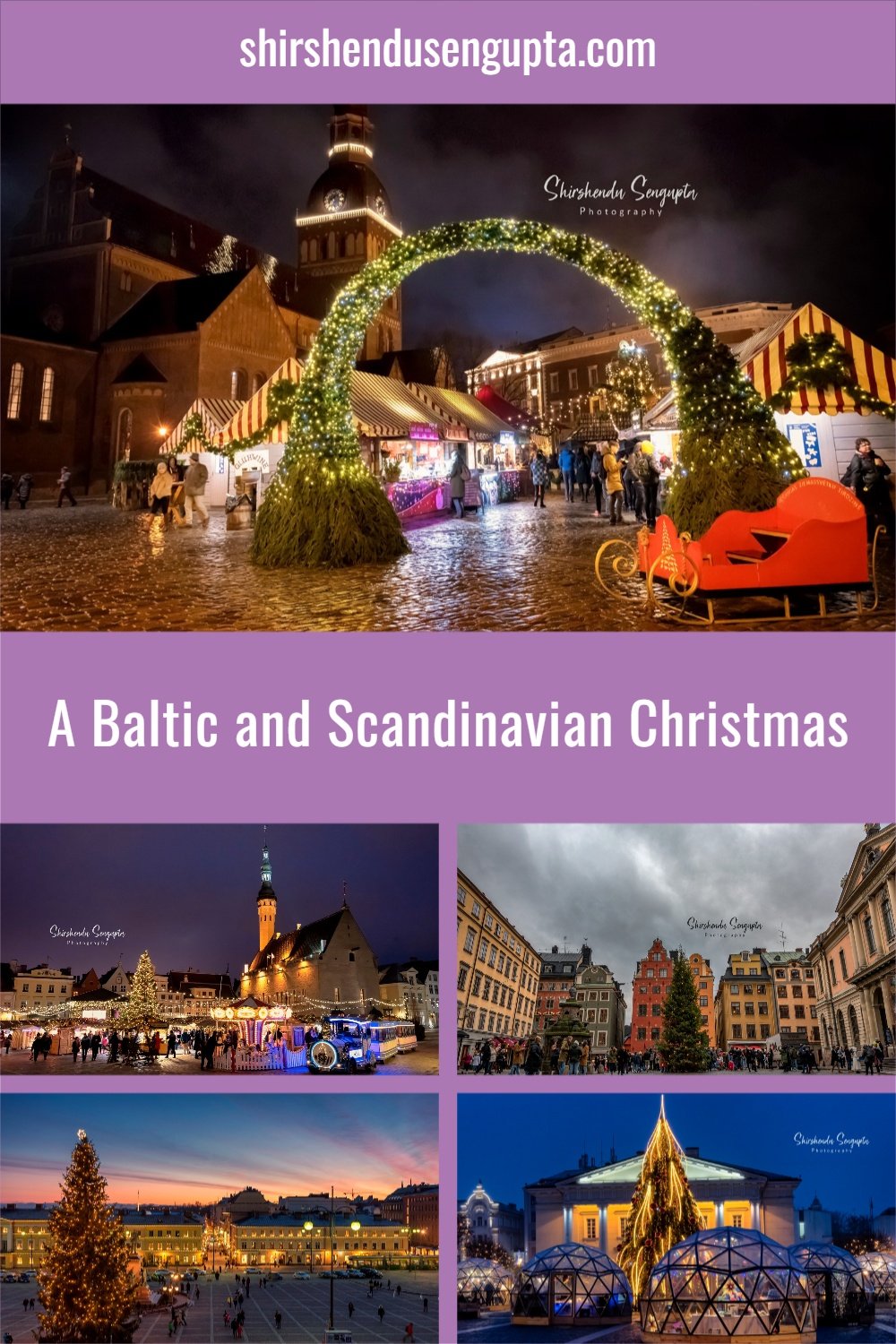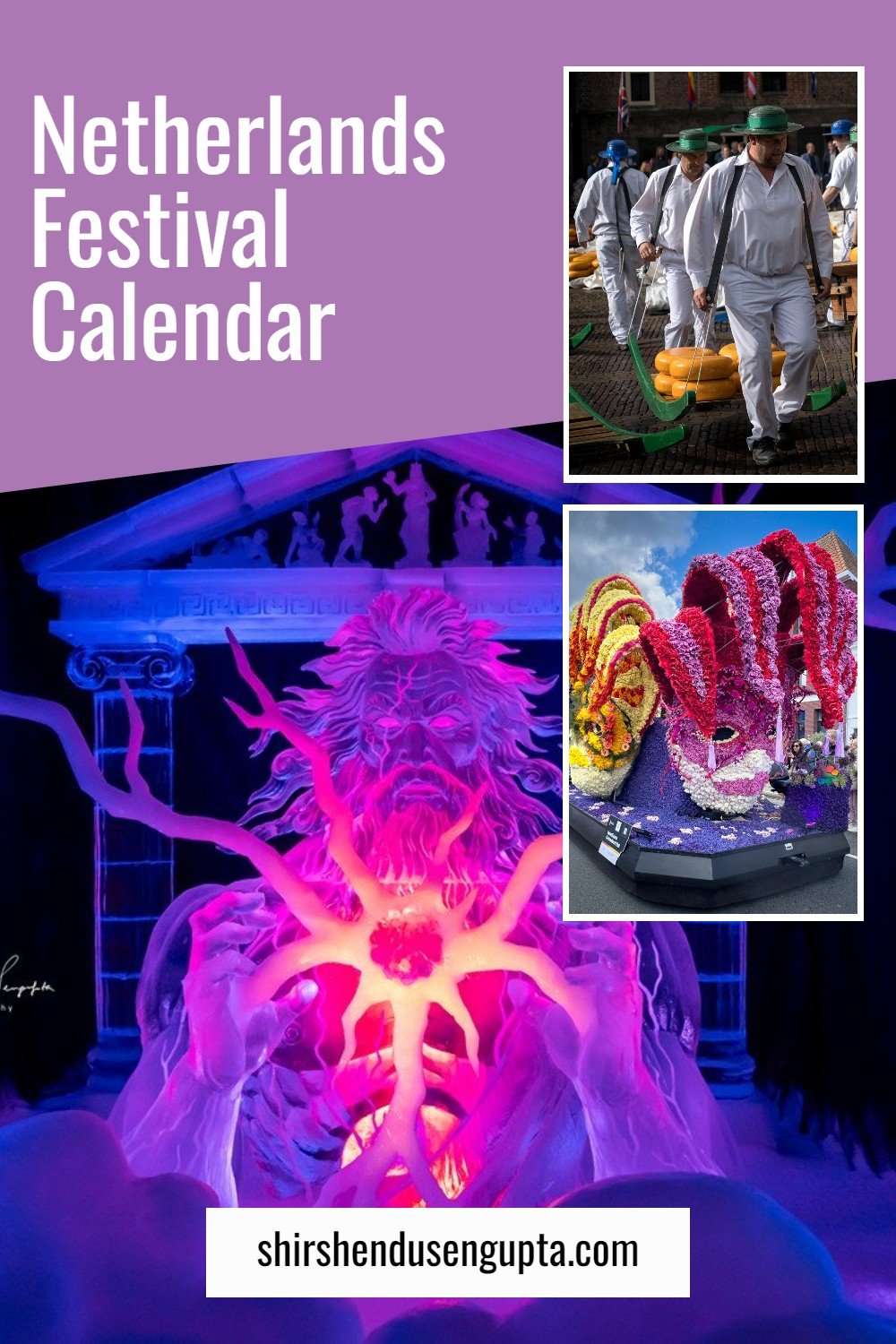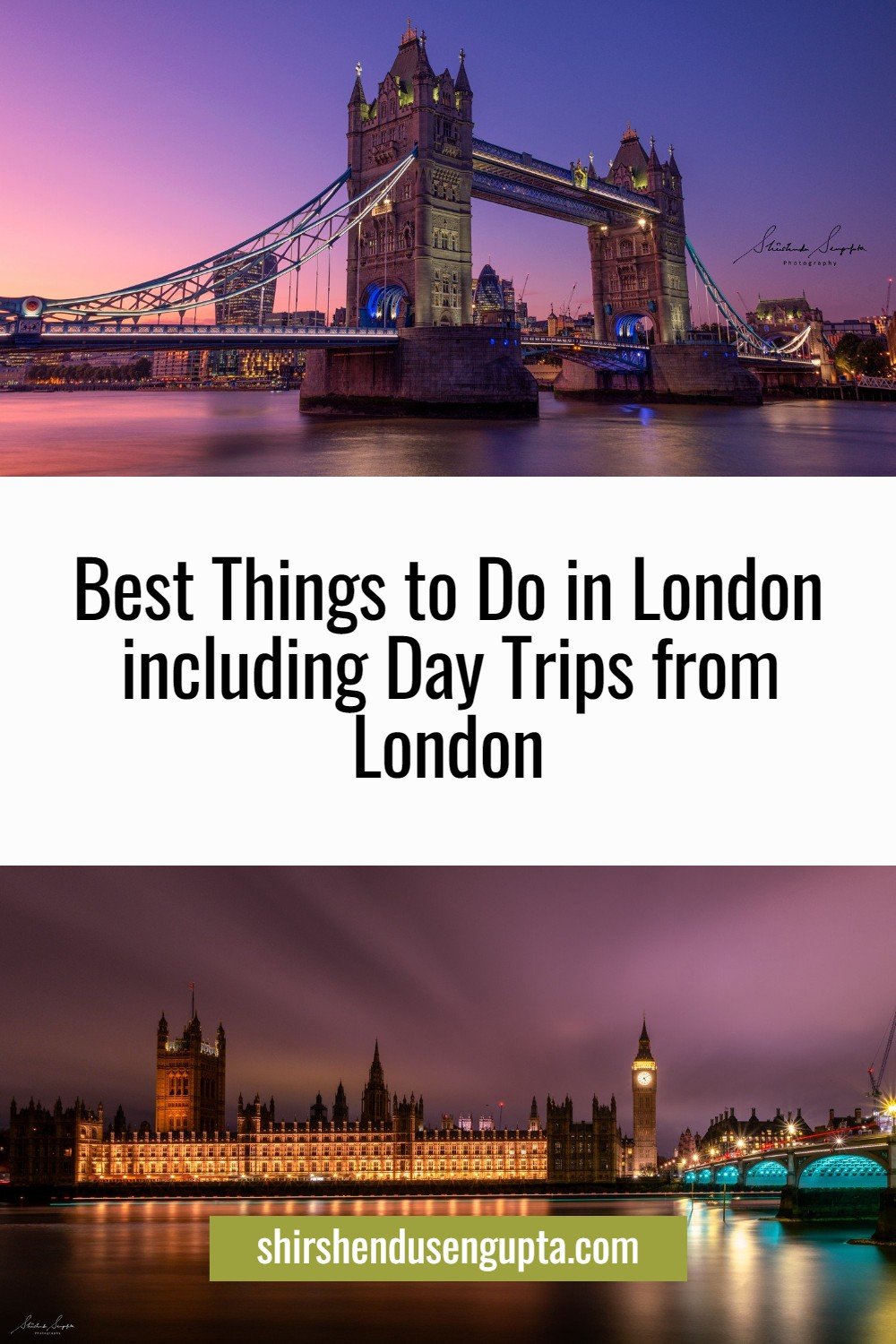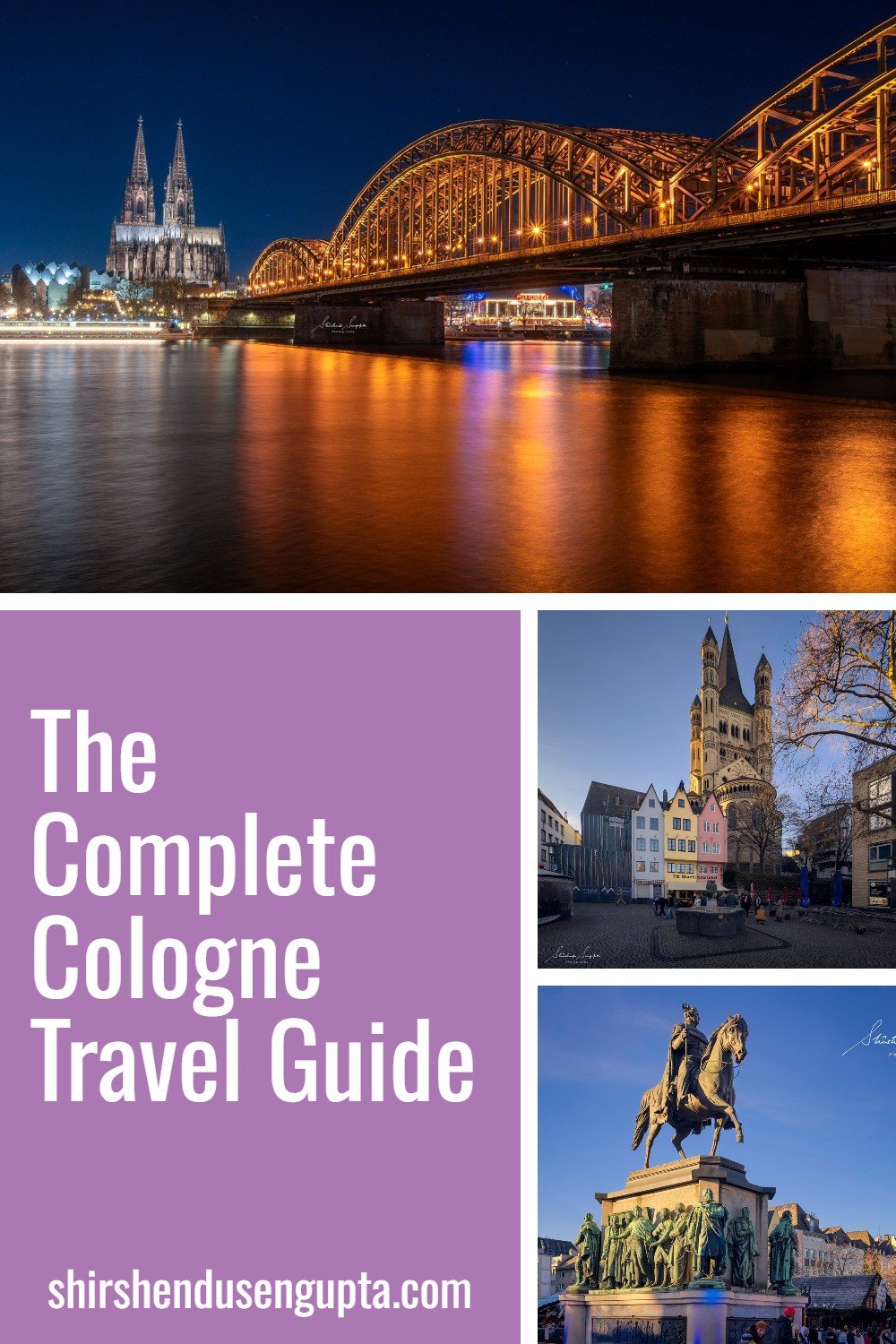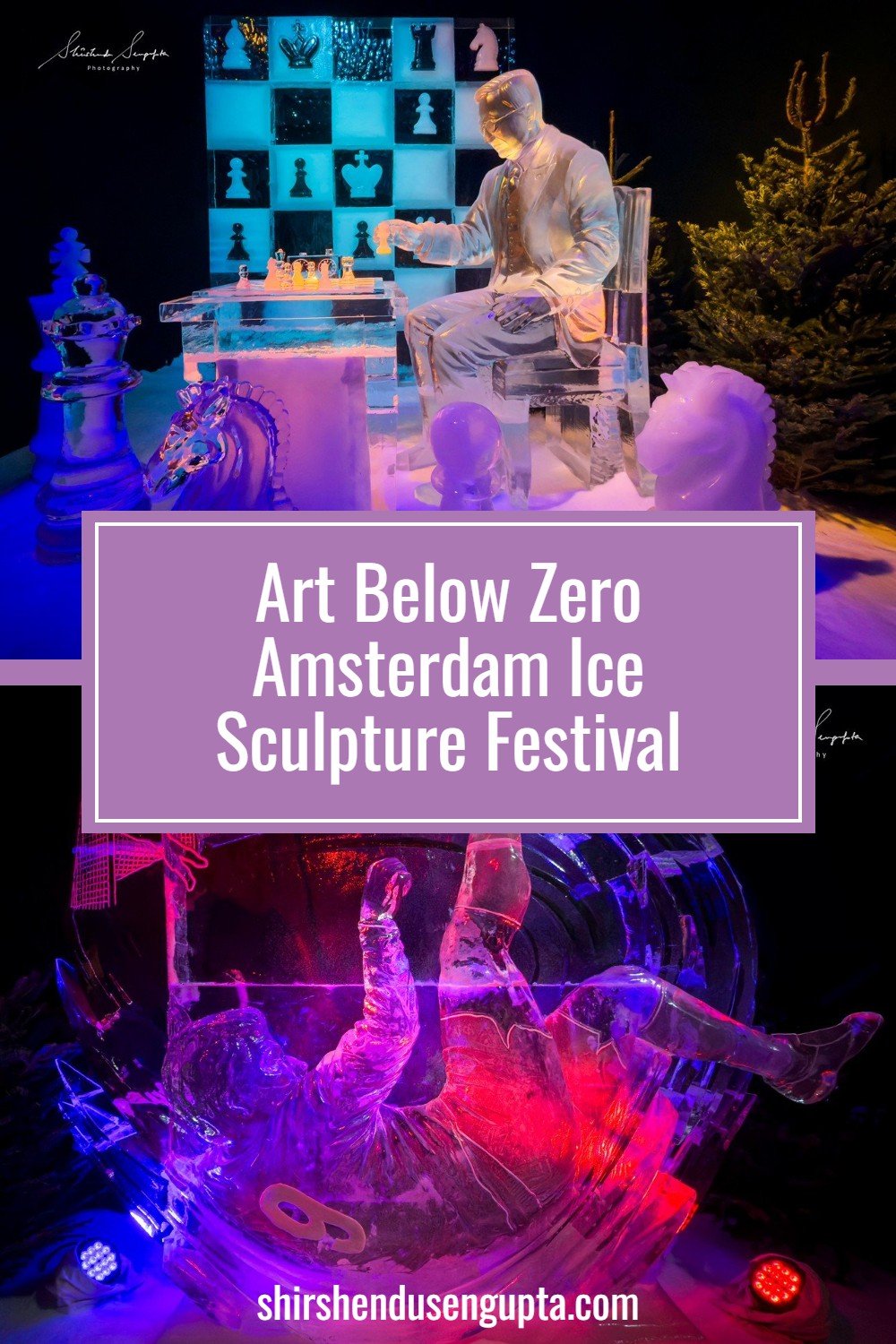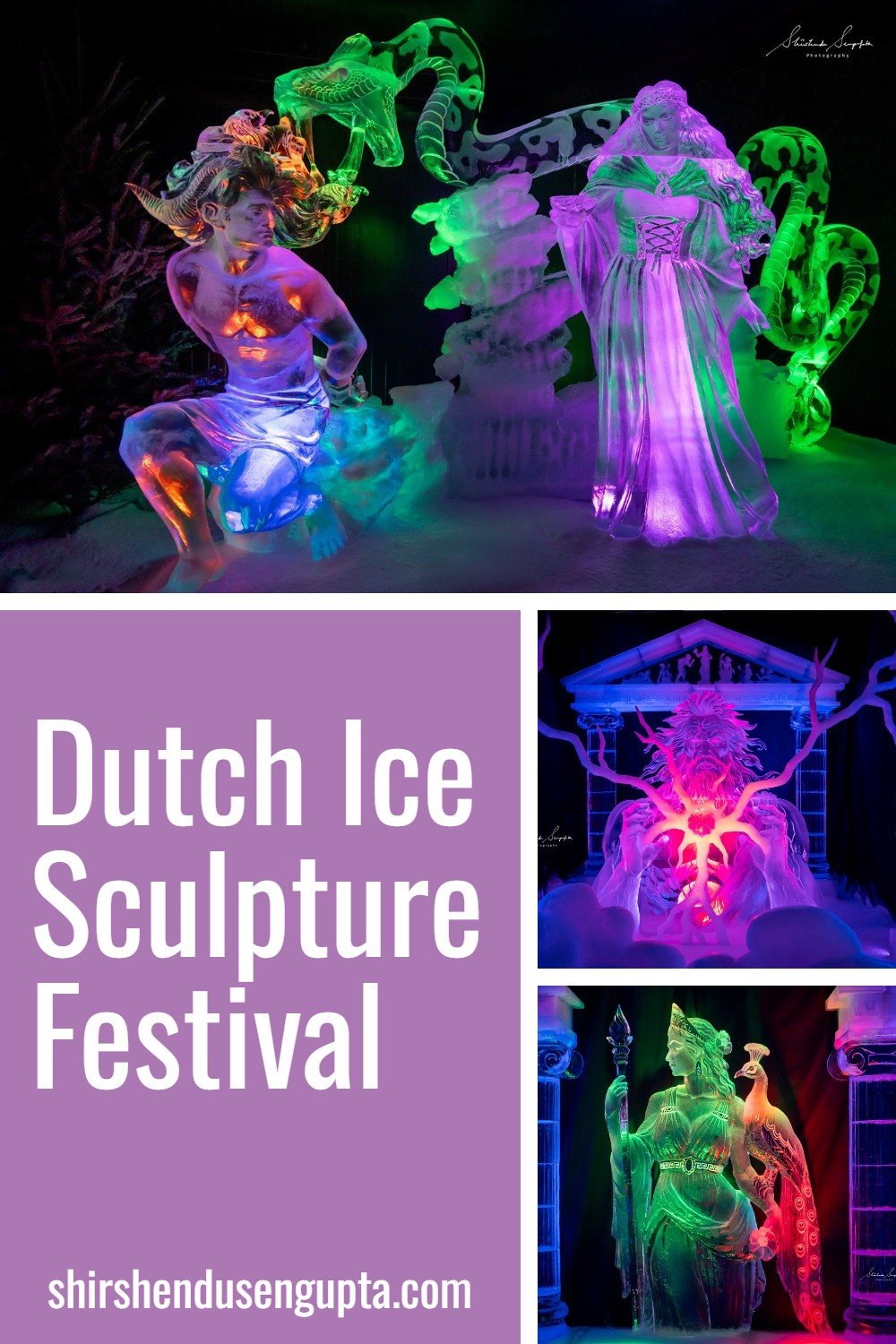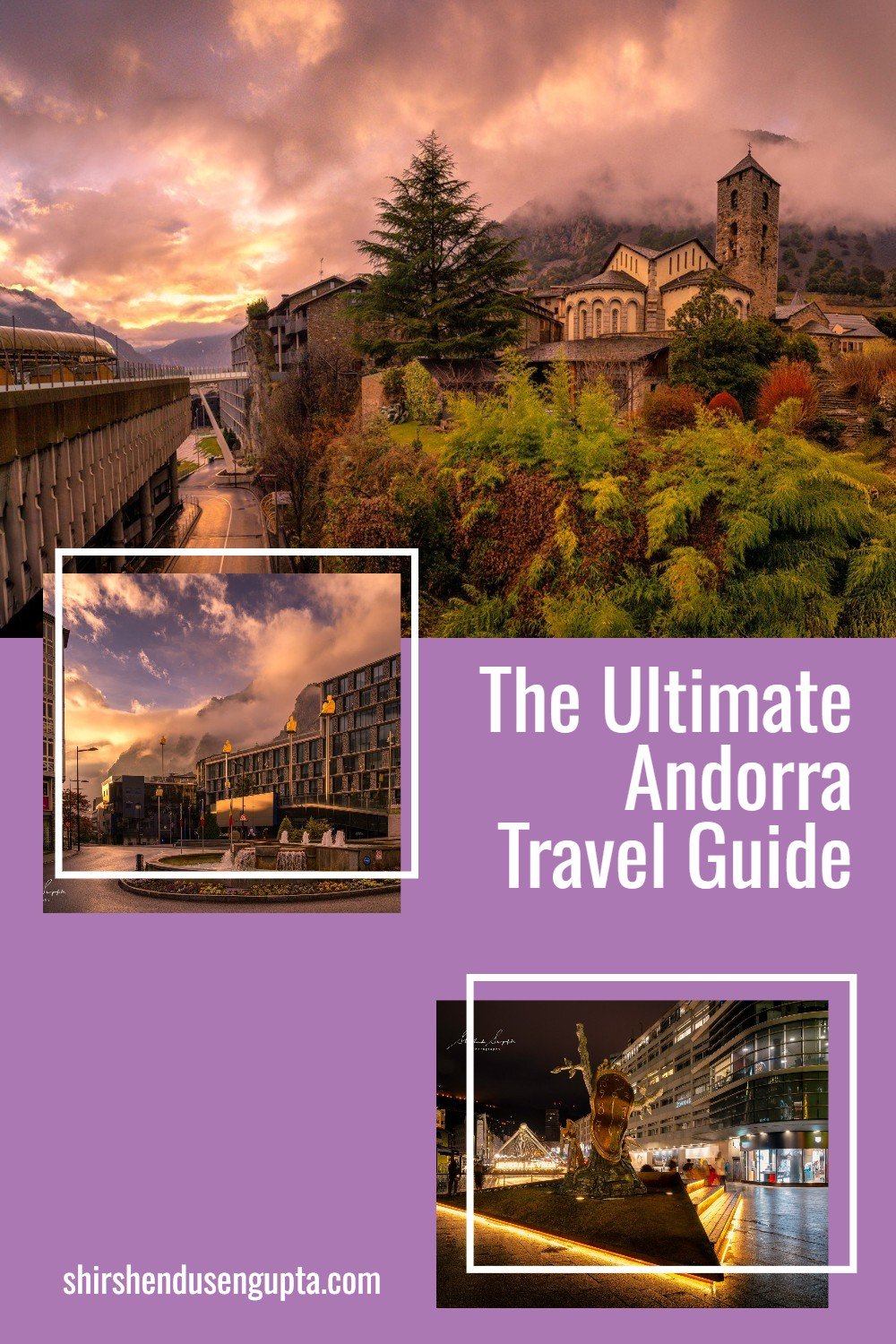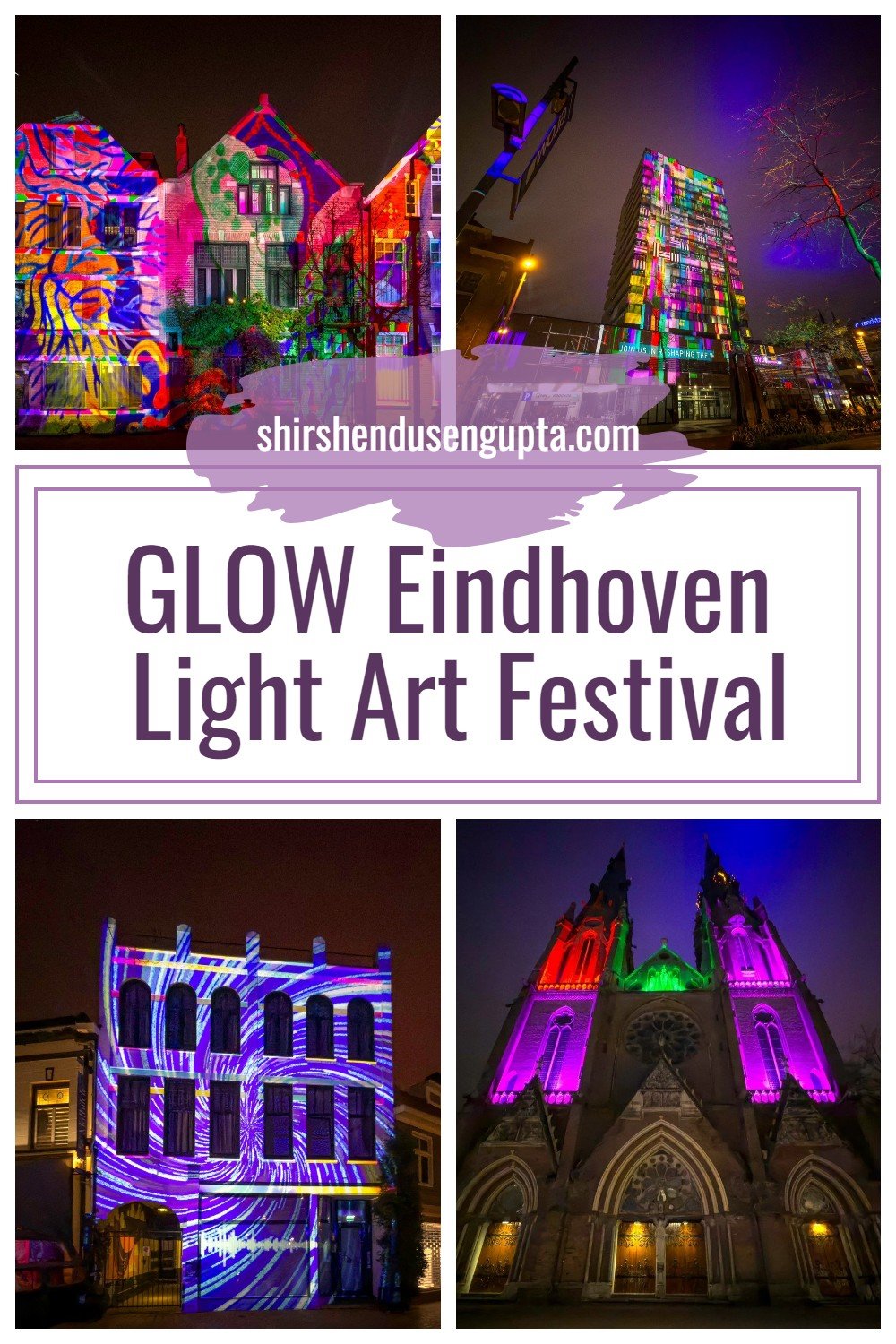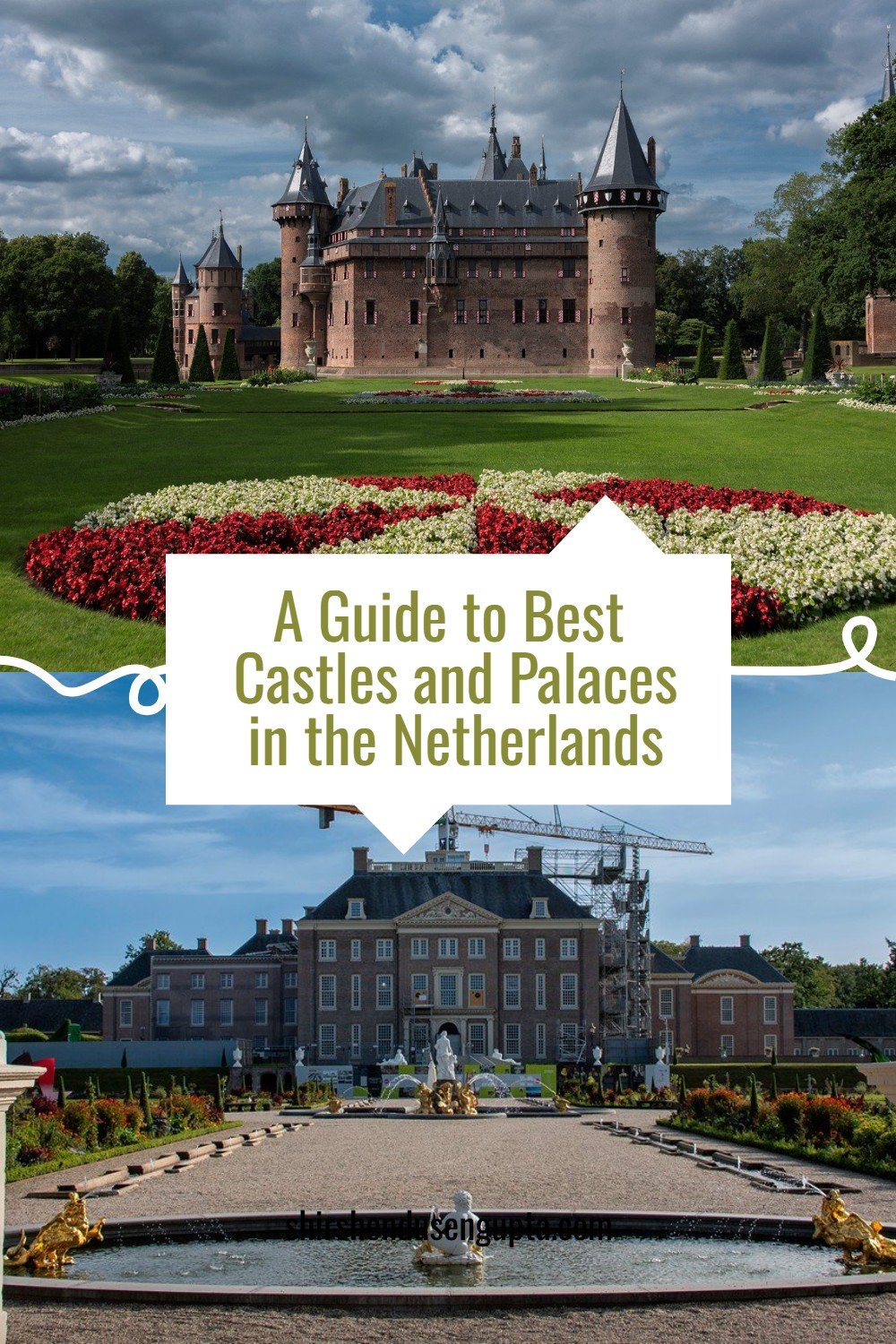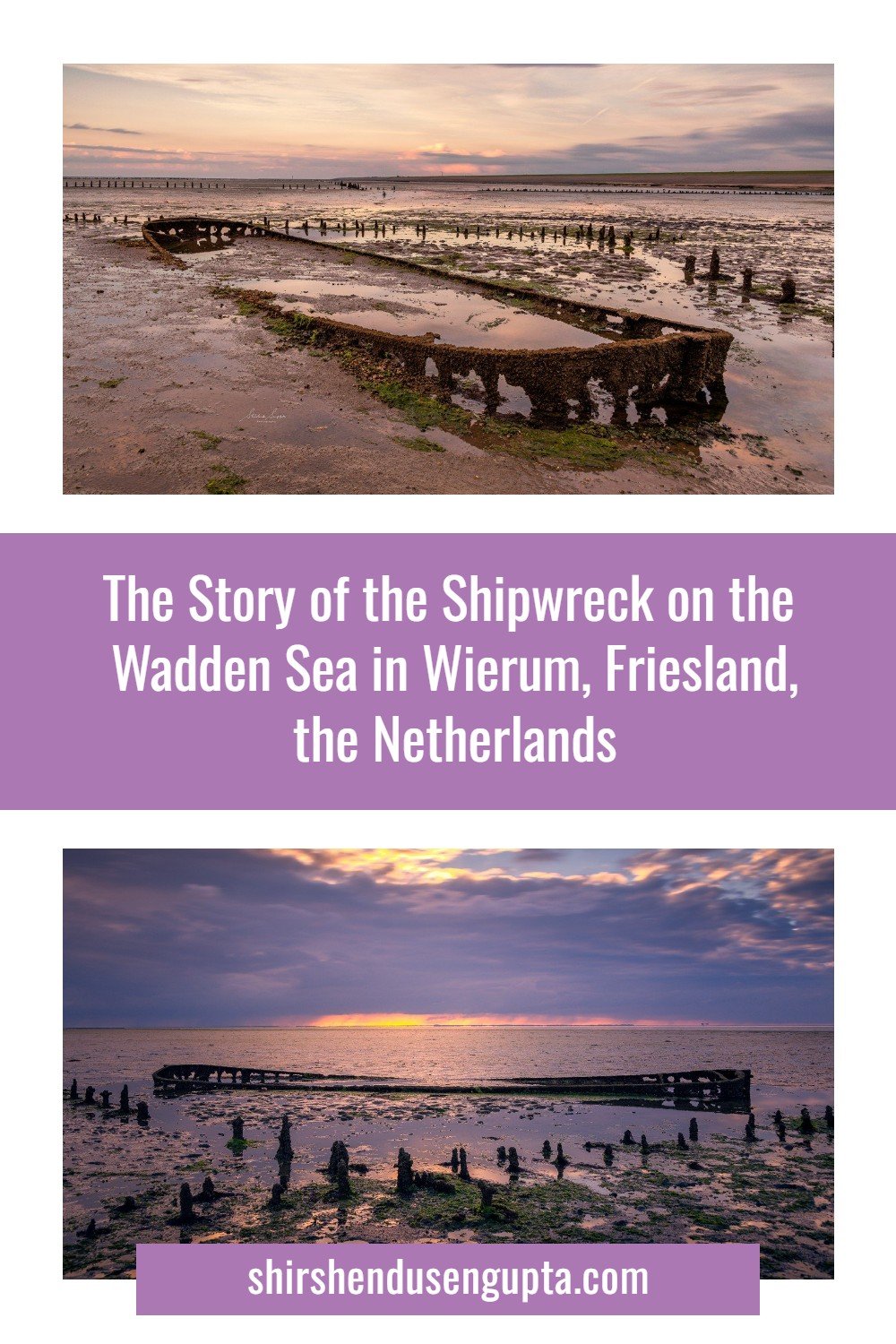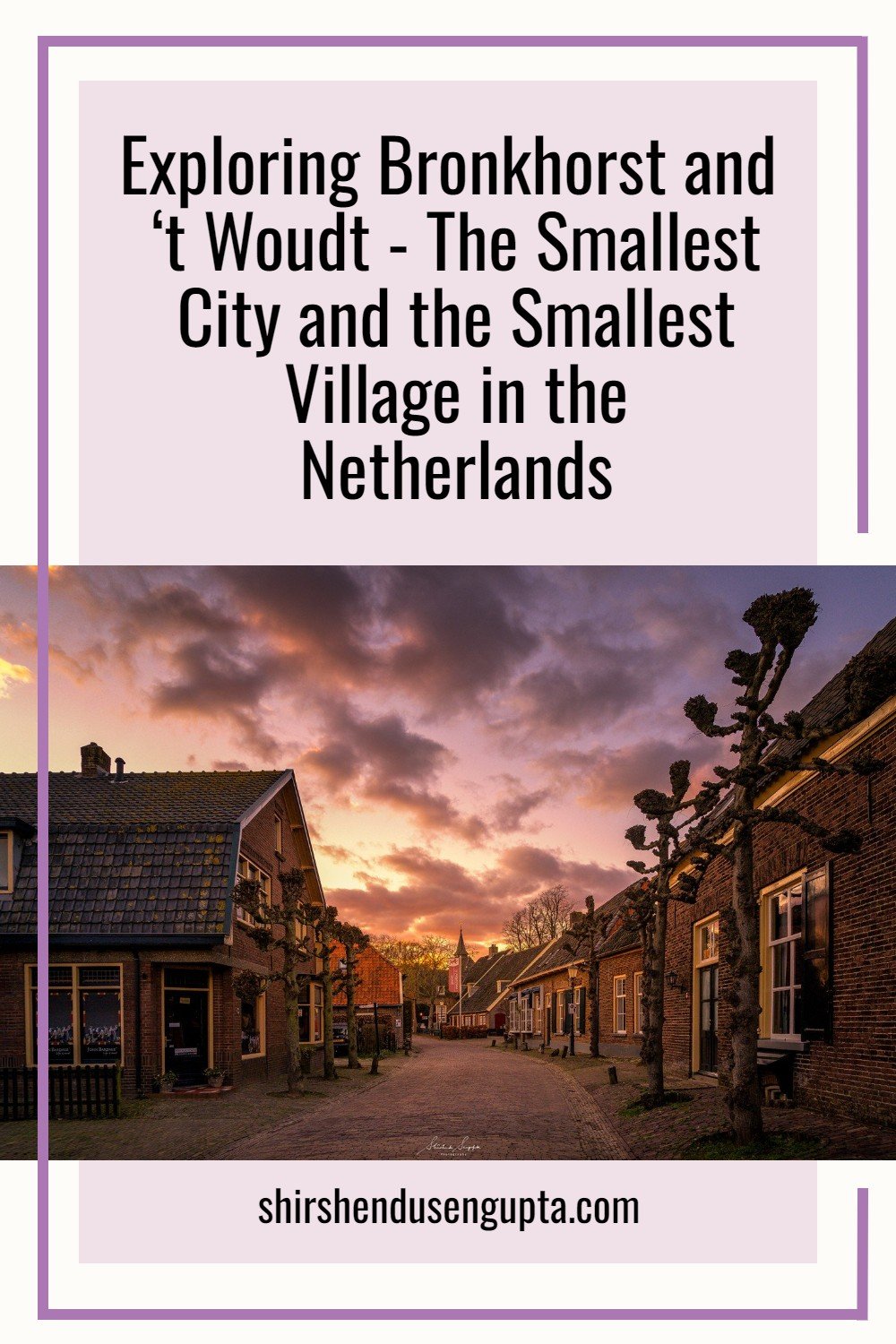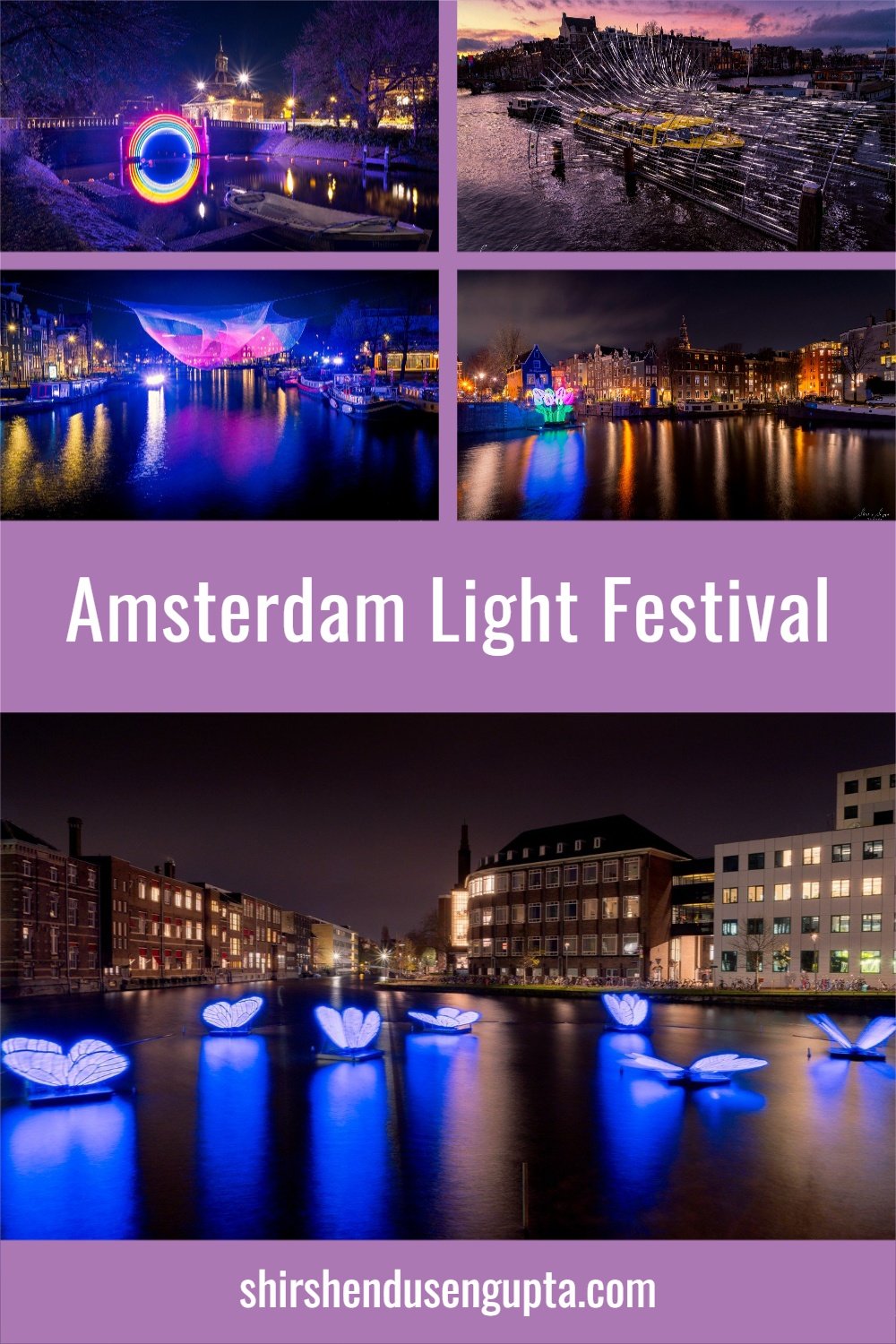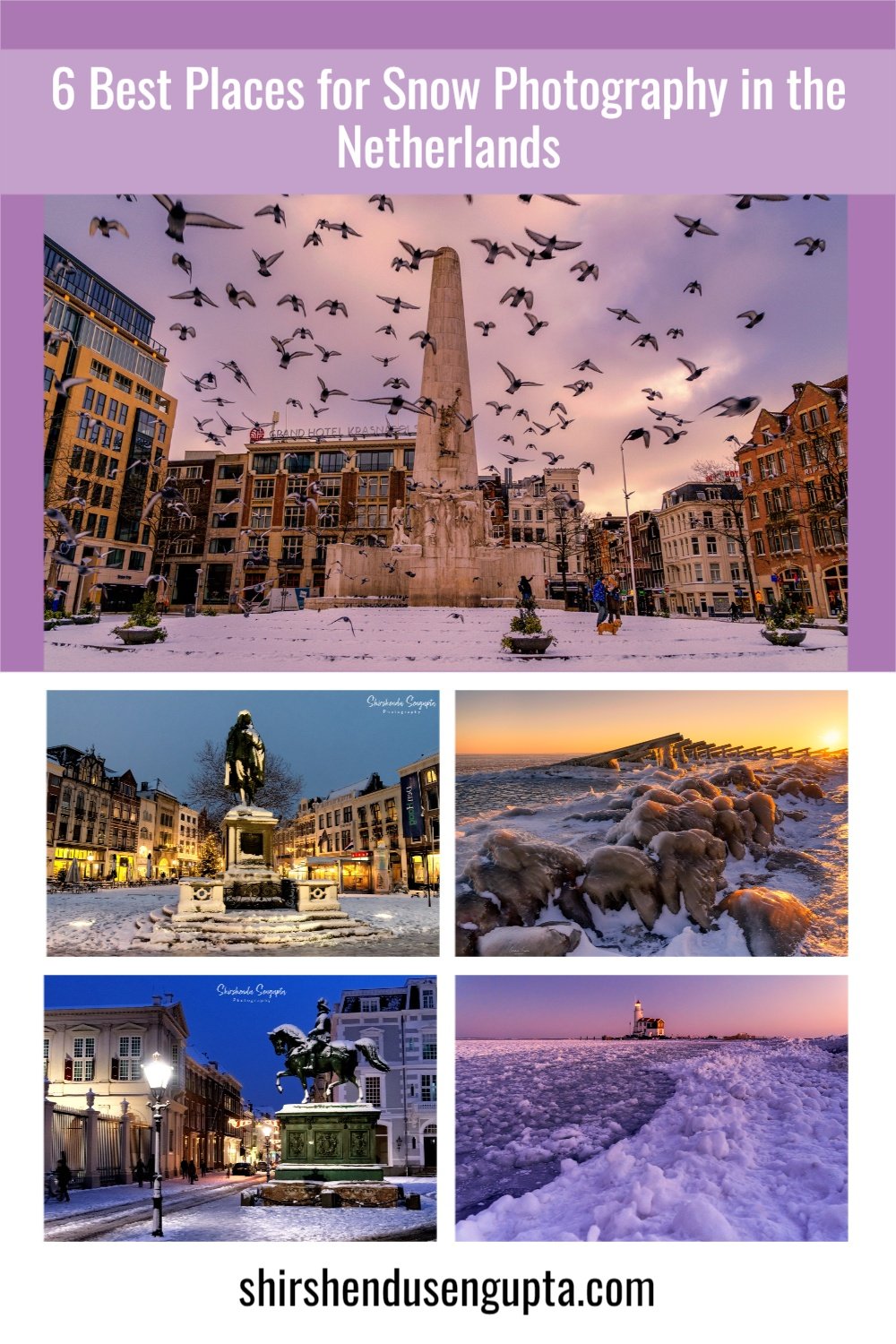A Baltic and Scandinavian Christmas | A 7000 km Cruise and Road Trip across Germany, Lithuania, Latvia, Estonia, Finland, and Sweden from the Netherlands | Travel Itinerary, Tips, and Tricks
Prologue
Today I’m going to tell you a Christmas story - an epic 7000 km journey that combined cruising and road-tripping across Germany, Lithuania, Latvia, Estonia, Finland, and Sweden from the Netherlands. It was a festive adventure filled with snowy landscapes, dazzling Christmas markets, cozy towns draped in lights, and the warmth of holiday traditions in every country we passed through. What began as a quest for a Christmas escape soon became one of the most memorable journeys of our lifetime. So, let the story begin!
The Itinerary
Day 1: Driving from Hoofddorp (the Netherlands) to Berlin (Germany)
On the early morning of day 1, we started from our home in Hoofddorp (the Netherlands), for a 675 km drive to Berlin (Germany). We made it in roughly 9 hours amidst some severe holiday traffic. Upon reaching Berlin, we checked in to our accommodation and slept off.
Day 2: Exploring Berlin (Germany)
Spent the whole day exploring Berlin, Germany’s capital city. Though we had been to many parts of Germany before, this was our first time in Berlin. As photographers, we opined that the city doesn’t have a lot to offer, but it indeed has a charm of its own (especially during Christmas, there’s a lot of decorations around the city which adds to the ambiance). It’s super busy but clean and fresh (as the 67,607 tons of bombing during 5 years of WWII left 80% of the city destroyed and was rebuilt entirely from scratch. It was estimated that for every citizen of Berlin, there were 30 cubic meters of rubble). We started the day with the Berlin Cathedral, then went to the East Side Gallery (remains of the Berlin Wall), witnessed a lovely sunset at the Brandenburg Gate, and finally enjoyed one of the many Christmas markets of Berlin.
To know more about the Berlin Wall and the iconic murals on the East Side Gallery, please read our article 15 Best Iconic Murals of Berlin Wall East Side Gallery | Top 15 Most Famous Graffiti and Street Art of Berlin Wall Memorial.
Day 3: Driving from Berlin (Germany) to Vilnius (Lithuania)
Drove 1032 km from Berlin (Germany) to Vilnius (Lithuania), crossing the rest of Germany, the entire country of Poland, and half of Lithuania in approximately 14 hours, crossing an international time zone thereby losing an hour. Upon reaching Vilnius, we checked in to our accommodation and slept off.
Day 4: Exploring Vilnius (Lithuania)
Explored Vilnius, the capital city of Lithuania, for the whole day. We found Vilnius, a tiny yet pretty town with a historic town center and lovely Christmas ambiance. Small yet beautiful Christmas markets, with 27 meters (around 90 feet) tall metal Christmas Tree made with 600+ branches and over 5 km of lighting themed on the Queen of Chess (ranked as finest Christmas Tree in Europe that year), surrounded by stalls offering well-crafted distinct handmade products, a wide variety of dining establishments open till midnight and youth choirs shouting Christmas carols all around make Vilnius a lovely Christmas destination.
To know more about the top things to see and do during Christmas in Vilnius, please read our article The Christmas Markets of Vilnius | Top 7 Things to See and Do during Christmas in Vilnius | 7 Best Places to Visit during Christmas in Vilnius, Lithuania.
Day 5: Driving from Vilnius (Lithuania) to Riga (Latvia) via Hill of Crosses in Jurgaiciai (Lithuania)
Drove 220 km from Vilnius, Lithuania to the Hill of Crosses in Jurgaiciai (Lithuania) in roughly 2.5 hours which is a collection of over 200,000 wooden crosses erected on a small hill, one of the most spectacular sights in the Baltic countries. Though all these crosses tell us about personal and public misfortunes and catastrophes (e.g., one cross was put after the wreck of the ferry “Estonia”), it is considered an expression of the people’s spontaneous religiousness. It is a symbol not of grief and death but of faith, love, and sacrifice. From here, the Pope blessed all people of Lithuania and all of Christian Europe.
To know more about the Hill of Crosses, please read our article The Christmas Markets of Vilnius | Top 7 Things to See and Do during Christmas in Vilnius | 7 Best Places to Visit during Christmas in Vilnius, Lithuania.
Then we drove 125 km further in another 2 hours to reach Riga (Latvia), and witnessed a beautiful sunset (around 15:25) from the Skyline Bar located on the 26th floor of Radisson Blu hotel. After that, we checked in to our accommodation and slept off.
Day 6: Exploring Riga (Latvia)
Spent the whole Christmas Day exploring the beautiful old town center of Riga, the capital city of Latvia. We found the old town of Riga to be very impressive and the Christmas market of Riga to be smaller than that of Vilnius but very cozy and ambiant and undoubtedly worth a visit when in the Baltics during Christmas. As Indians, we also had a couple of beautiful experiences like a Latvian busker coming up to us to inquire which country we come from and upon knowing we’re from India playing one of India’s most popular patriotic songs, “Saare Jahan se achha Hindustan humaara, hum bulbulein hain iski ye gulsitan humaara” meaning “In the whole world our India is the best, we are its singing birds, and it’s our land of flowers,” exclusively in our honor as we were the only Indian family present in the crowd or witnessing Hare Krishna sankirtana from ISKCON (International Society for Krishna Consciousness) consisting of primarily Latvian Krishna devotees amidst the hustle and bustle of the Christmas Market of Riga on Christmas Day setting an iconic example of communal peace, harmony, and tolerance in these difficult times.
To know more about the top things to see and do during Christmas in Riga, please read our article The Christmas Markets of Riga | Top 8 Things to See and Do during Christmas in Riga | 8 Best Places to Visit during Christmas in Riga, Latvia. And to know more about ISKCON (International Society for Krishna Consciousness), please read our article Radhadesh ISKCON Temple and Retreat Centre Belgium | Radhadesh Chateau de Petite Somme in Durbuy, Belgium.
Day 7: Driving from Riga (Latvia) to Tallinn (Estonia)
On the next morning of Boxing Day, we drove 315 km north to the city of Tallinn, capital of Estonia situated on the Baltic Sea, in roughly 4 hours. We enjoyed the lunch with a grand view in the Skybar Lounge24, located on the 24th floor of the Radisson Blu hotel. After that, we headed straight to our warm and cozy accommodation amidst a light snow shower and slept off for the night.
To know more about the top things to see and do during Christmas in Tallinn, please read our article The Christmas Markets of Tallinn | Top 7 Things to See and Do during Christmas in Tallinn | 7 Best Places to Visit during Christmas in Tallinn, Estonia.
Day 8: Exploring Tallinn (Estonia)
Spent the whole day exploring Tallinn, the capital city of Estonia, amidst a light snow shower with a chilling temperature of minus 10 degrees Celsius. We found Tallinn to be small yet lively and beautiful. And the Christmas decor is probably the best among the Baltics (Lithuania, Latvia, and Estonia). Also, we observed it to be the busiest among the 3 capital cities of the Baltics (Vilnius, Riga, and Tallinn) probably because it falls in the famous route of many cruise/ferry package tour lines that make rounds between the major cities on the Baltic Sea viz. Stockholm (Sweden), Helsinki (Finland), and Tallinn (Estonia), including the St. Peter’s Line, the only cruise company that takes you to St. Petersburg (Russia) from Helsinki and Tallinn without the need for a Russian visa (St. Petersburg lies in the European part of Russia). However, on the downside, what we observed is that at Tallinn and Estonia at large, customer service cannot be called ‘Best in class’, the locals can sometimes be a bit rough, rude or pushy, and the country is substantially expensive compared to Lithuania and Latvia (probably as per the age-old adage that says the further north you go the more expensive it gets and Tallinn is just 2.5 hours sailing from Helsinki, Finland in the Nordics/Scandinavia which is known for being super expensive anyway).
To know more about the top things to see and do during Christmas in Tallinn, please read our article The Christmas Markets of Tallinn | Top 7 Things to See and Do during Christmas in Tallinn | 7 Best Places to Visit during Christmas in Tallinn, Estonia.
Day 9: Sailing from Tallinn (Estonia) to Helsinki (Finland), and then exploring Helsinki (Finland)
Around noon, boarded the Eckero Line Cruise (with our car) from Tallinn to cross the Baltic Sea and reach Helsinki in roughly 2.5 hours. The cruise was well equipped and offered us an opportunity to relax in the warmth amidst minus 12 degrees and watch the sun come out through the clouds as we sailed over the Baltic.
Once we landed in Helsinki, we set off to explore the city on foot after parking the car in one of the parking garages in the center of the town. We feel the best words to describe Helsinki are posh, elegant, and expensive. Talking about Christmas Market (generally in Europe Christmas Markets run from early/mid-December to the end of the first week of January), though in the evening we were able to catch a glimpse of the Christmas decors that the city was adorned with, I understood from the locals that the main (and the most beautiful) Christmas Market just in front of the grand Helsinki Cathedral was functional only till Christmas (though the Christmas Tree in front of the Helsinki Cathedral was still there and a smaller Christmas Market was still functional at the Market Square). But our disappointment was compensated by the grandeur of the Helsinki Cathedral and a stunning sunset that we witnessed from the high vantage point of the Cathedral stairs.
To know more about the top things to see and do during Christmas in Helsinki, please read our article The Christmas Markets of Helsinki | Top 6 Things to See and Do during Christmas in Helsinki | 6 Best Places to Visit during Christmas in Helsinki, Finland.
Day 10: Exploring Helsinki (Finland), and sailing to Stockholm (Sweden)
Spent the day until evening exploring some unique Finnish architecture typically characterized by environmentalism and minimalism in Helsinki, the capital city of Finland, in entirely overcast, freezing, and windy weather. We explored the famous Sibelius Monument (located within the Sibelius Park) designed by Eila Hiltunen dedicated to the Finnish composer Jean Sibelius (1865–1957), the only place in the entire city of Helsinki where we found tourists in abundance even on a dreary Sunday morning followed by the Temppeliaukio Church (nicknamed as the Rock Church as it was built directly inside the solid rock by architect brothers Timo and Tuomo Suomalainen (opened in 1969) and the Uspenski Cathedral (whose interiors are famous for its ornate decorations but unfortunately we missed it as being a Sunday the church closed at 15:00 and we managed to reach there only by 15:10).
To know more about the top things to see and do during Christmas in Helsinki, please read our article The Christmas Markets of Helsinki | Top 6 Things to See and Do during Christmas in Helsinki | 6 Best Places to Visit during Christmas in Helsinki, Finland.
After that, we headed straight to the port of Helsinki to onboard the overnight (18 hours) cruise to Stockholm (Sweden). The cruise was very well equipped with all amenities that one expects from a one-night cruise liner - Around 1500 rooms/cabins, supermarkets, shopping malls, spas, salons, cafeterias, restaurants, buffets, bars, casinos, children play areas, video games, movie theaters, night clubs, dance performances, piano concerts, rock shows, quiz shows and several other competitions going on in different timings on different decks. However, the weather was tremendously stormy (as the wind we faced in Helsinki refused to subside), especially towards the night that made standing and especially sleeping extremely difficult as the cruise kept going a few meters up and then falling with a resounding thud on the waves every second. So we tried enjoying the concert (which was accompanied by high spirited people ballroom dancing to the tunes while rolling from one side of the dance floor to the other as the ship dwindled on the rough sea) while waiting for the waves to subside (which didn’t happen anyway) until 2 AM and then headed off to our cabin to sleep. When we woke up in the morning, we were sailing through the calm Baltic waters of Sweden already.
Day 11: Exploring Stockholm (Sweden)
Spent the whole day exploring Stockholm, the capital city of Sweden. Though it was freezing and windy, we had a lovely stroll of 8 km around the waterfront and the old town. We also went to the Nobel Prize Museum and witnessed entire Christmas Market shops being shifted out by cranes from the Stortorget, the central square of Stockholm. We also observed that Stockholm is much more cosmopolitan and international than Helsinki or the other Baltic cities of Vilnius, Riga, and Tallinn. Also, in the center of the old town of Stockholm, almost 70-80% of the souvenir shops (especially the ones selling handicrafts) were hosted by Pakistani shop owners. When we entered a couple of them, we were delighted with their warm reception and hospitality. Upon hearing that we’re from India, they said we’re their neighbors and can’t let us go without having something in their shop. They ordered tea and soft drinks for us alongside putting on Indian music. We wish this relationship stays not only among the Indians and Pakistanis abroad but also within the respective lands of the 2 neighboring countries. Let this be a ‘New Hope’ for the New Year.
To know more about the top things to see and do during Christmas in Helsinki, please read our article The Christmas Markets of Stockholm | Top 5 Things to See and Do during Christmas in Stockholm | 5 Best Places to Visit during Christmas in Stockholm, Sweden.
Day 12: Driving from Stockholm (Sweden) to Hamburg (Germany)
Drove 1000 km from Stockholm (Sweden) to Hamburg (Germany), crossing over the Baltic Sea via land connection (sea link bridges) at 2 points (the first while entering Denmark from Sweden and another while entering Germany from Denmark) in approximately 12 hours (with breaks) and stopped over in Hamburg for the night. On the way, we touched Copenhagen (Denmark) but didn’t stop there as we had done Copenhagen in one of our previous trips when we traveled to Denmark and Norway.
Day 13: Driving from Hamburg (Germany) to Hoofddorp (Netherlands)
The next morning, we continued our homeward journey for another 500 km in approximately 5 hours (with small breaks) to reach home in Hoofddorp (the Netherlands).
Info, Tips, and Tricks
1. Choose the right season for visiting these countries
Before you set out for traveling to any country, the first thing you need to research is the right season to travel. E.g., The Baltics are particularly glamourous during Christmas with decorations all around the cities and the quaint, little, authentic Christmas markets selling unique local merchandize. But on the downside, you have around 4-5 hours of daylight (depending on which Baltic country you are – the further north you go, the shorter the day gets), and extremely cold weather. Whereas during summer (which is just a single month, by the way, 😉), nature can be breathtaking with around 22-23 (!) hours of sunlight. Also, for your information, December is the driest month in the Baltics, and summer is rainy! So set your priorities and decide your moment of travel.
2. Check for festivals during your travel for traffic and closure of shops
Always remember traveling during the high season (especially during the school holidays) will always have its downsides. The highways will be jammed entirely with vacation goers (and caravans!), hotel prices will be sky high, and on Christmas or New Year, most restaurants (and even public toilets!) might be closed, including the ones at petrol pumps on the highway. So please plan upfront.
3. Plan for the weather
The upper half of the Baltics can be frigid during the Christmas season (when we were there, Tallinn was -10, and Helsinki was -12 degrees Celsius during the day and went down to -16 during the night). So, dress accordingly and pack a pair of warm boots for your little one/s.
4. Plan for the budget
Remember, though Balkan and Baltic names sound similar, the expenses might not be. Lithuania and Latvia are still manageable, but Finland and Sweden (though Finland and Sweden are Nordic/Scandinavian countries they are still often referred to as Baltic countries as they’re situated on the Baltic Sea) can be particularly expensive (street parking/parking garage at the center around 7-8 Euros an hour, cost/toll for accessing each of the sea link bridges over the Baltic Sea (while traveling from Sweden to Denmark and Denmark to Germany) around 50 euros approx., 500ml water bottle around 2.5-3.5 euros even in supermarkets and a single piece of chocolate pastry around 8-9 euros). Even Estonia is strikingly expensive compared to Lithuania and Latvia. So, factor that into your planning and book hotels and cruise tickets way in advance (4+ months back) to get the best deals and try dining in local restaurants which serve authentic cuisines and are way cheaper than the more international/continental ones.
5. Plan for your health
Eastern Europe, the Balkans, and the Baltics are characterized by diverse ecosystems and hence a great range of biodiversity. However, many of the wild flora and fauna can infect you with deadly diseases like Tick-borne Encephalitis or Lyme disease (especially if you’re planning to camp in the woods/mountains). So, discuss the places you plan to visit with your physician before your vacation and take precautions/vaccinations accordingly. However in my opinion, if you stick to the towns/cities, you should be fine without them. Also, please prepare for seasickness if you are taking overnight cruises (especially if you’re sailing through rough waters). Please consult your physician for the appropriate medication that you can carry with you on the trip.
6. Plan for your itinerary
Planning your daily itinerary can be very challenging, especially on the nitty-gritty that can vary substantially with the season. E.g., The access to the open terrace of the Radisson Blu Skybar in Tallinn (Estonia) is closed during winters (so you can only take pictures from inside through the glass windows), and there’s another Skybar on the adjacent Swissotel on the 30th floor, which’s open only from 17:00 during holidays. Similarly, the Clock Tower of St Olaf’s church in Tallinn (Estonia), which has excellent views overlooking the old town, is also closed during the Christmas season. By the way, an additional info is that, if you really want a good bird’s eye view of the city of Riga, Skybar (don’t confuse with the Skybar of Tallinn, Skybar is present in all major cities of Europe, including all the 3 major Baltic capitals, namely Vilnius, Riga, and Tallinn) indeed is not the best option. Instead, try to access the clock tower (which has an elevator to the top) of St. Peter’s Church. It has hands down one of the best views of a city from any clock tower that I’ve ever climbed to date. And the best part is that the view is 360 degrees and has no iron grills or nets to obstruct your camera lens. So, don’t miss it when you are in Riga.
7. Plan for your route
When traveling from one country to another, always check the route followed by your GPS. In other words, don’t follow it blindly. E.g., We noted on the way that the TomTom GPS or the Google Maps always tend to take the fastest routes, and those might not necessarily always be land-connected routes. They might direct you towards routes that include a ferry to cross over the Baltic Sea while entering Denmark from Sweden or Germany from Denmark as they might consider them the fastest option (though the land connected route is merely an hour longer than the ferry connected ones since to catch ferries you have to reach early and wait which compensates for the delay over the land connected route). Try to avoid such ferry-dependent routes as over the long journey of 12 hours, it will already be evening (and dark very early at this time of the year), and there’s a possibility that the ferries might not run anymore (also during holidays the ferries run infrequently). So you will be stranded on a dark jetty with no ferries leaving and will have to then go around to find a land connection which will easily be a detour of 2-3 hours that will potentially jeopardize your planning, or else you might have to find yourself a hotel to stopover for the night which will be highly challenging and expensive. However, to avoid such routes, you need prior research, knowledge, planning, and experience to be able to guide the TomTom GPS/Google Maps towards the land connected routes instead of following their advice (as in TomTom GPS, you do not have an option ‘Avoid Waterways’ which could have made the task easier). In other words, you should “Know the way” upfront.
8. Plan for car insurance
Before hitting the road, ensure that your car is insured in all the countries you are traveling to and if not, get it insured in those countries upfront, as driving a vehicle without insurance is illegal in Europe (both in EU and non-EU countries). However, if you already have a green card for your car, then you should be insured for all these countries by default as they are all members of the European International Green Card System for automobile insurance. But please double-check with your insurance provider. It is better to be safe than sorry.
9. Plan for the port control checkpoints
Since all the countries we traveled to on this trip are in the EU (European Union), hence none of them had a border control checkpoint on the road. However, there were 2 passport control checkpoints at the Port of Tallinn (before taking the ferry to Helsinki) and another at Port of Helsinki (before taking the cruise to Stockholm). So please keep your passport, visa (or resident permit if you are residing in EU countries or equivalent), driving license, car documents (the physical green card with your car number/license plate on it), car insurance (green paper also called as the green card) handy for verification. Also, please note that the last entry time in the ferries/cruises is roughly 1 hour before the scheduled departure, and you also need to consider a buffer time window of approx 1 hour (max) even before that for the queuing of the cars and the documents verification at port control checkpoints. So effectively, it means you should reach the port terminal 2 hours before the scheduled departure of your ferry/cruise.
10. Plan for stickers/vignettes for your car
Before traveling by road in any country in Europe, you need to research the stickers/vignettes (equivalent to road tolls or emission certifications) you need to paste on the windscreen of your car before entering that country. Technically if you are caught without stickers, fines can range between 50 and 200 Euros. You can also buy vignettes at the local fuel stations when you enter a country, and you just have to display the bill on your dashboard. However, based on our experience, nobody checks (apart from Switzerland, ask me about it!). Still better to be safe than sorry.
11. Plan for the fueling
Just before you travel, check the gasoline/diesel cost across countries to decide in which country it’s cost-effective for you to refuel. If you are driving a company lease car and have a fuel card paid by your company (like I have an all Europe Shell Card), research upfront on the Shell Station Locator and plan those fueling stops in your itinerary at regular intervals lest you run out of fuel since Shell does not have many stations across these countries. Also, check upfront on the Shell Station locator if it sells the kind of fuel your car uses, if it’s open 24 hours, if it’s a manned or unmanned pump, etc.
12. Plan for the cash
Normally, in the Baltic countries, cards are accepted in all major fuel stations, restaurants, and supermarkets (Mainly Mastercard and Maestro, not so much Visa, and NO American Express AT ALL). However, for buying souvenirs or food from Christmas Market stalls, ‘Cash is King’. Also, all these countries apart from Sweden accept Euros, but only in Sweden, they have their own local currency (Swedish Krona). So, withdraw only as much you need for buying souvenirs from Christmas Markets. If you have leftover cash in local currency (Swedish Krona in this case), exhaust them by buying sandwiches/chips/water from a fuel station and stock them in your car (you’ll use them later anyway) before leaving Sweden.
13. Plan for your communication
Normally, people speak excellent English in Baltic countries (in contrary to the Balkans). So, language should be no bar. But you could sometimes face challenges around asking a local for a landmark (that you don’t know what’s called in the local language) or explaining to the waiter for a food that you’re allergic to. However, you can get around that in 2 ways. Firstly, always keep a printed excel sheet with you containing the most commonly used phrases like “Hello,” “I want to use the toilet” or “I want to drink water,” or food that you need to buy from supermarkets daily like milk, bread or egg or the food that you are allergic to in English vs. the local languages of all the countries you are traveling to. Secondly, always activate your data roaming on your phone before you leave as it’s convenient to Google the landmark where you want to go or the food item you’re allergic to, like mushrooms or shrimps or aubergine, and show the image on your phone screen.
14. Plan for the check-in/out timings of your accommodation and international time zones
In the Baltics, many hotels/accommodations do not have 24-hour reception, and all have different check-in and out timings (for most of them, check-in starts only after 14:00). So, you need to know it before booking the hotel and let them know your arrival time by calling them on the day of travel when you start driving from your previous location. Also, please account for time changes when you cross the international time zones (like we went ahead by an hour when we drove from Berlin to Vilnius as we crossed the international time zones to enter EET (Eastern European Standard Time) from CET (Central European Standard Time) zone.
Epilogue
So that brings us to the end of our ‘A Baltic and Scandinavian Christmas’ journey. Please let us know in the comments below if you enjoyed reading this article. And until we meet next time, I wish you merry traveling and happy shooting!
Pin the article
Bookmark the article for reading later!
Want to license/buy photos in the article?
License photos for commercial/editorial use or buy photo prints!
Want us to write an article for you?
Articles for magazines, newspapers, and websites!
Watch our Videos
Check out our videos on our Youtube Channel!
Join the Newsletter
Get updates on our latest articles!
We respect your privacy. Read our policy here.

